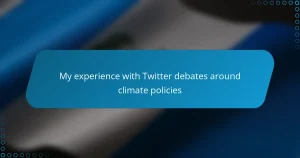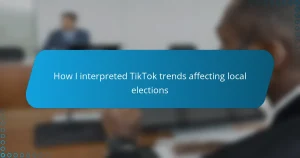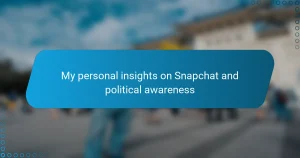Key takeaways
- Civic engagement encompasses various forms of participation, from traditional activism to modern digital platforms like Instagram, enhancing community connection.
- Instagram’s features, such as Stories and Reels, facilitate immediate and emotional engagement with civic issues, making complex topics more relatable.
- While Instagram empowers grassroots movements and political activism, it risks oversimplifying issues and spreading misinformation due to its visual focus.
- Challenges include the potential for echo chambers and the loss of nuance in discussions, highlighting the importance of intentional engagement on the platform.
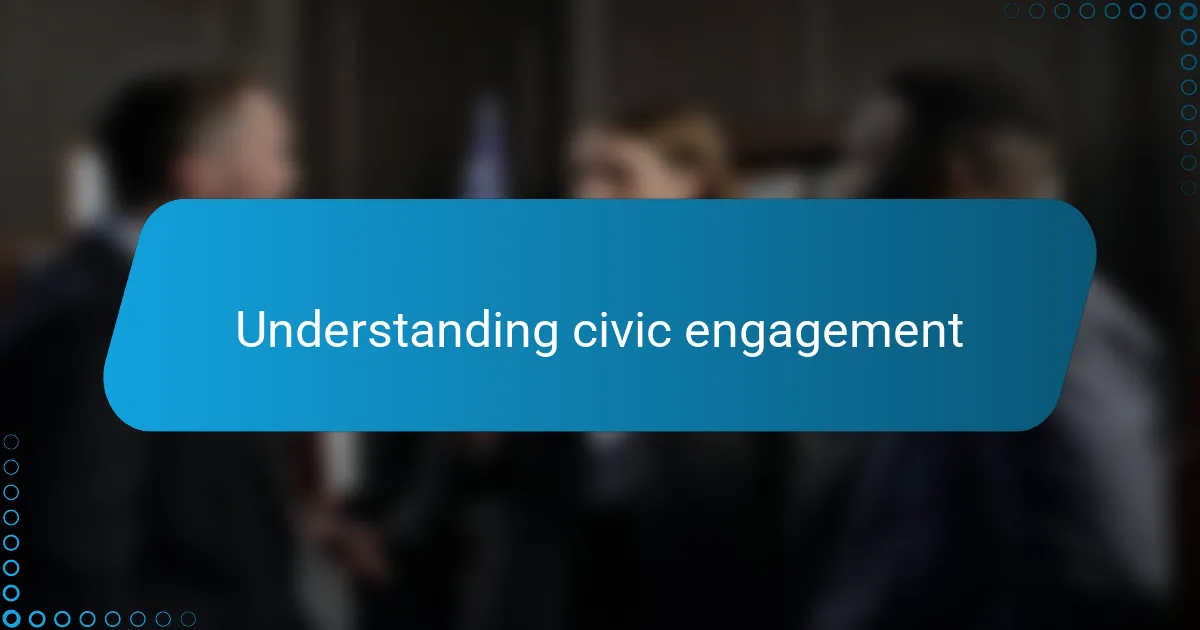
Understanding civic engagement
Understanding civic engagement means recognizing how people participate in their communities and politics. From voting to activism, it’s about connecting with issues that affect our daily lives. I’ve seen firsthand how small acts, like signing a petition or attending a town hall, can feel powerful and meaningful.
| Traditional Civic Engagement | Modern Civic Engagement |
|---|---|
| Face-to-face interactions | Digital platforms like Instagram |
| Physical attendance at events | Online campaigns and content sharing |
| Local community focus | Broader, even global reach |
| Slower information flow | Instant updates and feedback |
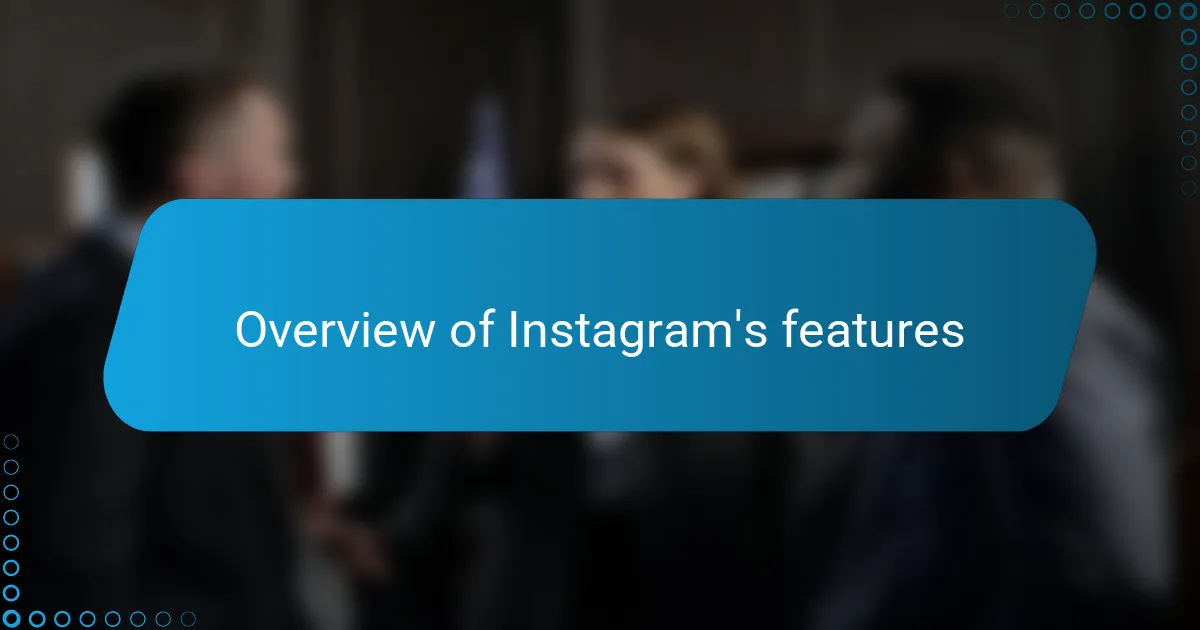
Overview of Instagram’s features
Instagram’s design makes it incredibly easy to share visuals that capture attention quickly, which I’ve found is crucial when discussing complex political issues. From my experience, the blend of photos, short videos, and Stories creates a dynamic space where messages can feel both immediate and personal.
One feature I find particularly powerful is Instagram Stories—it’s like having a real-time conversation with followers. I remember using Stories during election season to highlight local voter registration drives, and the direct engagement I received was surprisingly heartfelt and motivating.
- Photo and video posts for polished, shareable content
- Stories for ephemeral, interactive updates
- Reels to create short, engaging video clips with broad reach
- IGTV for longer, more detailed video discussions
- Direct messaging for personal conversations and mobilization
- Explore page to discover trending civic content and connect with new audiences
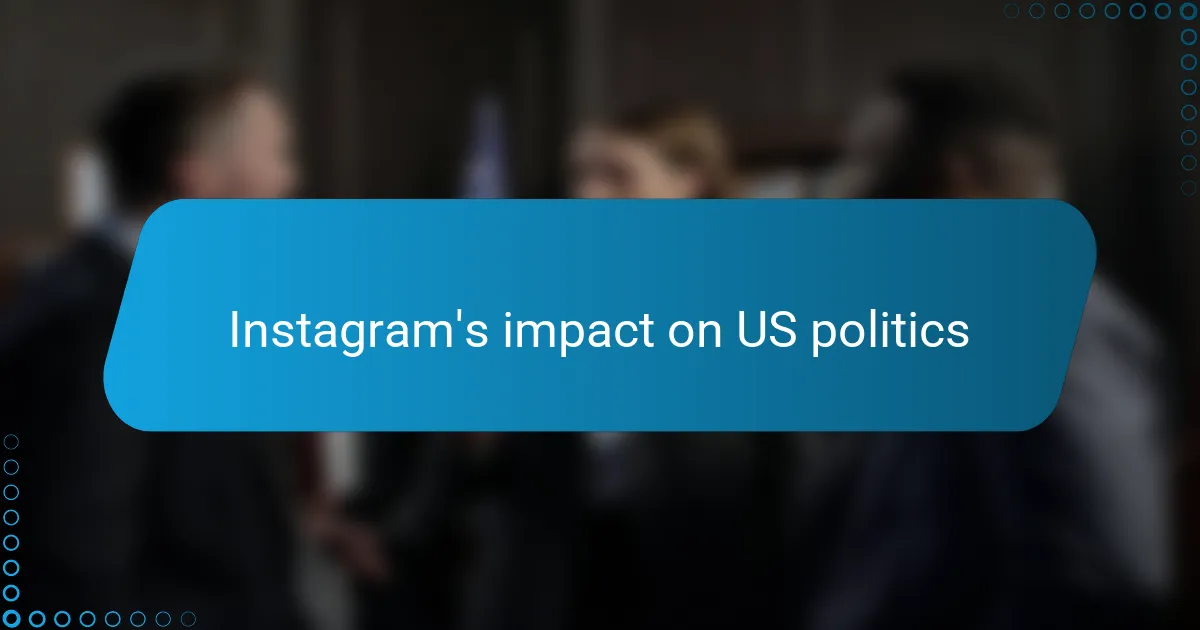
Instagram’s impact on US politics
Instagram’s impact on US politics is undeniable. From my perspective, it has transformed the way politicians communicate, making politics more visual and immediate. I recall seeing grassroots movements gain traction overnight through compelling stories shared on Instagram, which was something traditional media couldn’t achieve as quickly.
However, the platform also poses challenges. The focus on visuals sometimes simplifies complex political issues, reducing debates to catchy images or slogans. I’ve found myself questioning whether such surface-level engagement genuinely fosters informed civic participation or just momentary trends.
| Positive Effects | Negative Effects |
|---|---|
| Enables real-time political engagement | Encourages oversimplification of complex issues |
| Amplifies voices of grassroots movements | Can spread misinformation quickly |
| Makes politics accessible to younger audiences | Visual focus may prioritize style over substance |
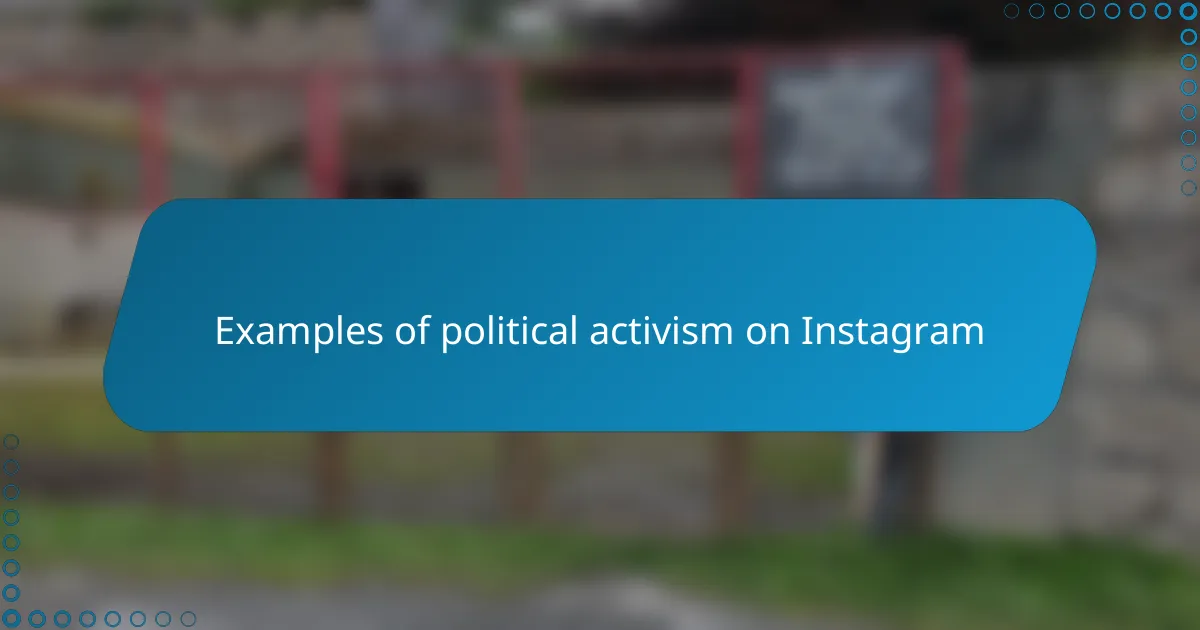
Examples of political activism on Instagram
Instagram has become a powerful tool for political activism, offering a visually driven platform that captures attention quickly. From my experience following various movements, I’ve seen how hashtags and stories can mobilize communities overnight, making complex issues more relatable and urgent. The visual nature of Instagram means activists can convey emotion and urgency in ways that text alone sometimes can’t.
Some standout examples of political activism on Instagram include:
– The Black Lives Matter movement, which used Instagram to share impactful images and personal stories, amplifying calls for racial justice.
– Climate change campaigns that post striking before-and-after photos and infographics to raise awareness and encourage sustainable actions.
– Voter registration drives that leverage Stories and Reels to make signing up accessible and even fun.
– Grassroots organization efforts that post livestreams and real-time updates from protests, keeping supporters informed and engaged.
These examples show how Instagram not only spreads information but also builds emotional connections that drive civic participation.
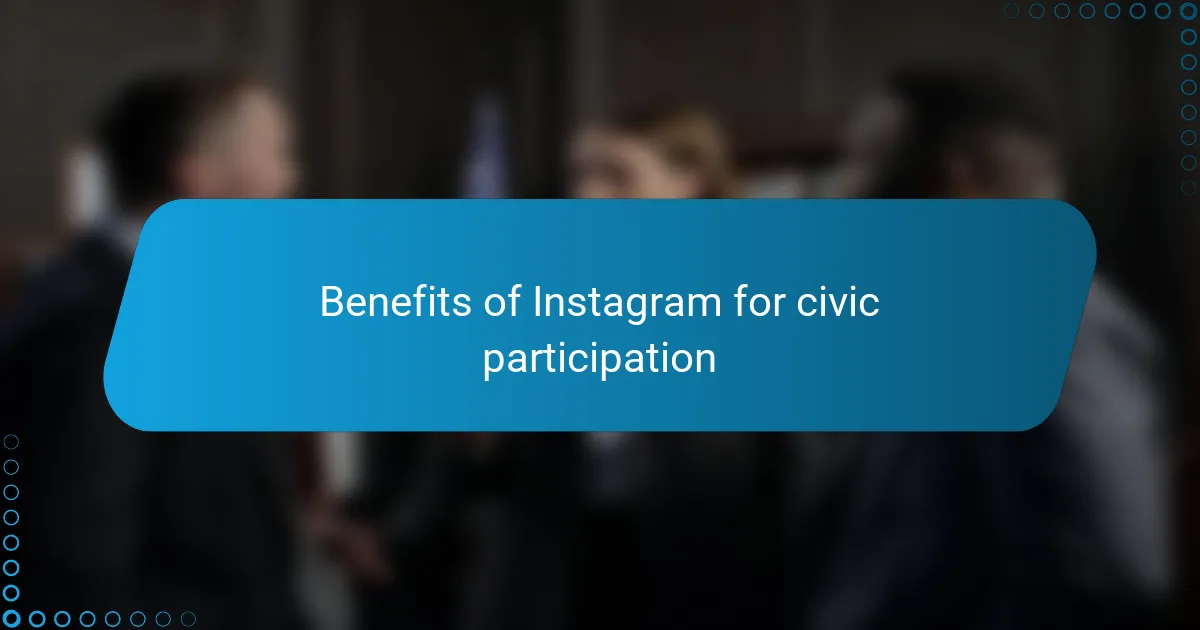
Benefits of Instagram for civic participation
Benefits of Instagram for civic participation
Instagram offers a unique space where visual storytelling breathes life into civic issues. From my experience, vibrant images and concise videos can spark awareness much faster than lengthy articles. I’ve seen firsthand how a compelling story on Instagram can motivate friends and strangers alike to attend rallies or register to vote.
The platform’s algorithm also helps amplify local voices that might otherwise go unheard. When I followed grassroots activists, I realized how Instagram not only spreads information but also builds a sense of community among people passionate about change. It’s this blend of engagement and accessibility that makes Instagram invaluable for modern civic participation.
| Aspect | Benefit |
|---|---|
| Visual Content | Engages users quickly through images and videos |
| Community Building | Connects like-minded individuals and local activists |
| Algorithm Reach | Amplifies diverse voices beyond traditional media |
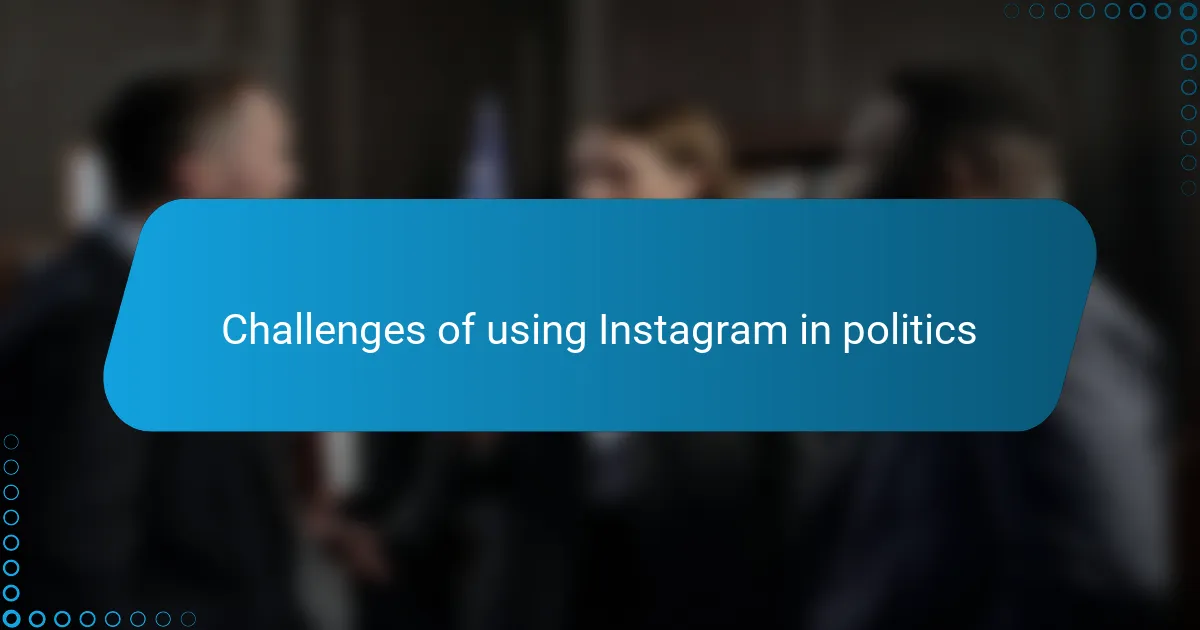
Challenges of using Instagram in politics
One challenge I often notice is how Instagram’s fast-scrolling culture can encourage bite-sized political messages that miss important nuances. Have you ever felt like scrolling past a flashy post because the issue seemed too complex to unpack in a single image? I’ve certainly been there, and it makes me wonder if this quick-consumption style really fosters deep understanding—or just surface-level reactions.
Misinformation also lurks as a tricky problem. Since Instagram thrives on visual impact, misleading graphics or out-of-context clips can spread like wildfire before fact-checkers catch up. I’ve seen well-meaning people share emotional posts that later turned out to be inaccurate, which is frustrating because it undermines trust and slows down genuine dialogue.
Lastly, the platform’s algorithm can create echo chambers, showing us more of what we already agree with and limiting exposure to diverse viewpoints. From my experience, that makes meaningful conversations across political divides harder to find on Instagram. Doesn’t it feel like sometimes we’re talking mostly to ourselves rather than reaching new audiences?
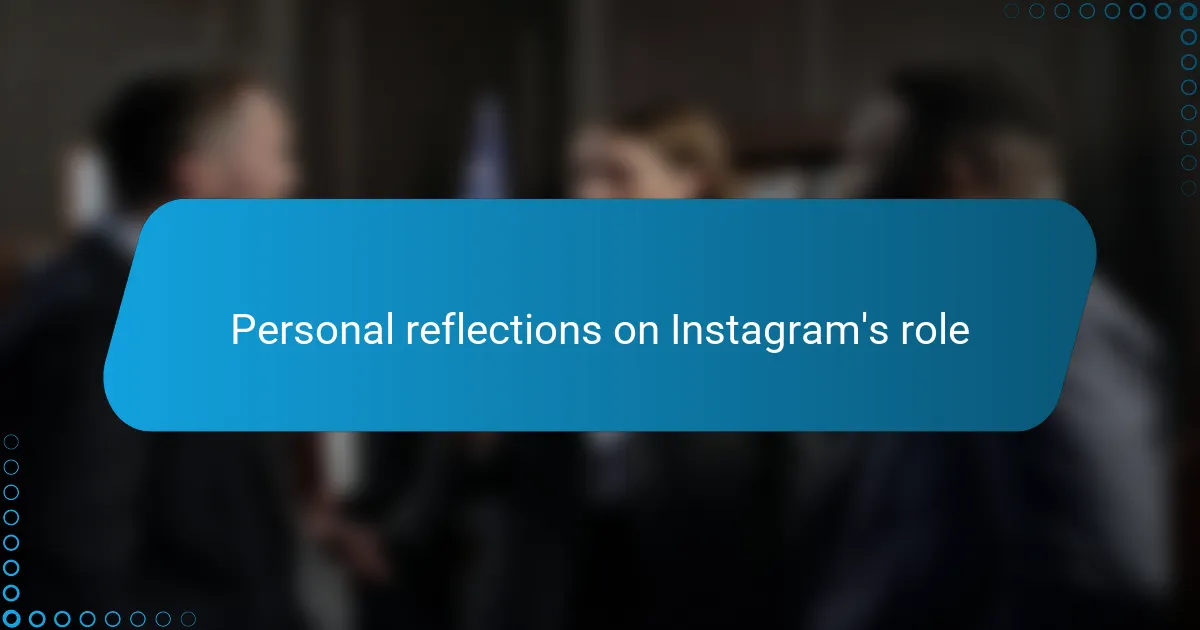
Personal reflections on Instagram’s role
I’ve often found myself reflecting on how Instagram feels like a double-edged sword in civic engagement. On one hand, it’s incredibly energizing to see a cause come alive through vibrant images and stories that resonate emotionally. But sometimes I wonder—does the platform encourage us to truly engage, or just skim the surface of important issues?
There have been moments when scrolling through my feed, I stumbled upon posts that made me pause and think deeply about topics I hadn’t considered before. Those personal stories and visuals made the political feel personal, which is powerful. Yet, I’ve also caught myself feeling overwhelmed by the sheer volume of content, making it hard to determine what deserves my attention.
What strikes me most is Instagram’s ability to connect people instantly but also isolate them in echo chambers. I find myself asking: are we building bridges through these digital interactions, or just reinforcing our own beliefs? From my experience, the answer isn’t simple—it depends a lot on how intentionally we use the platform to listen as much as we speak.
